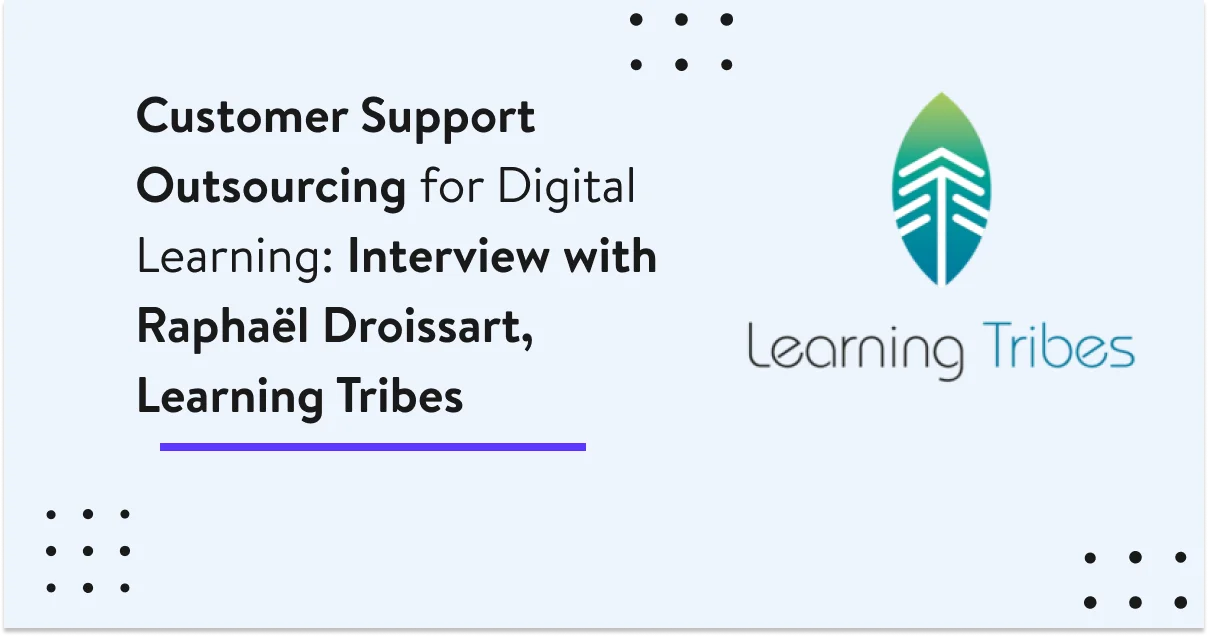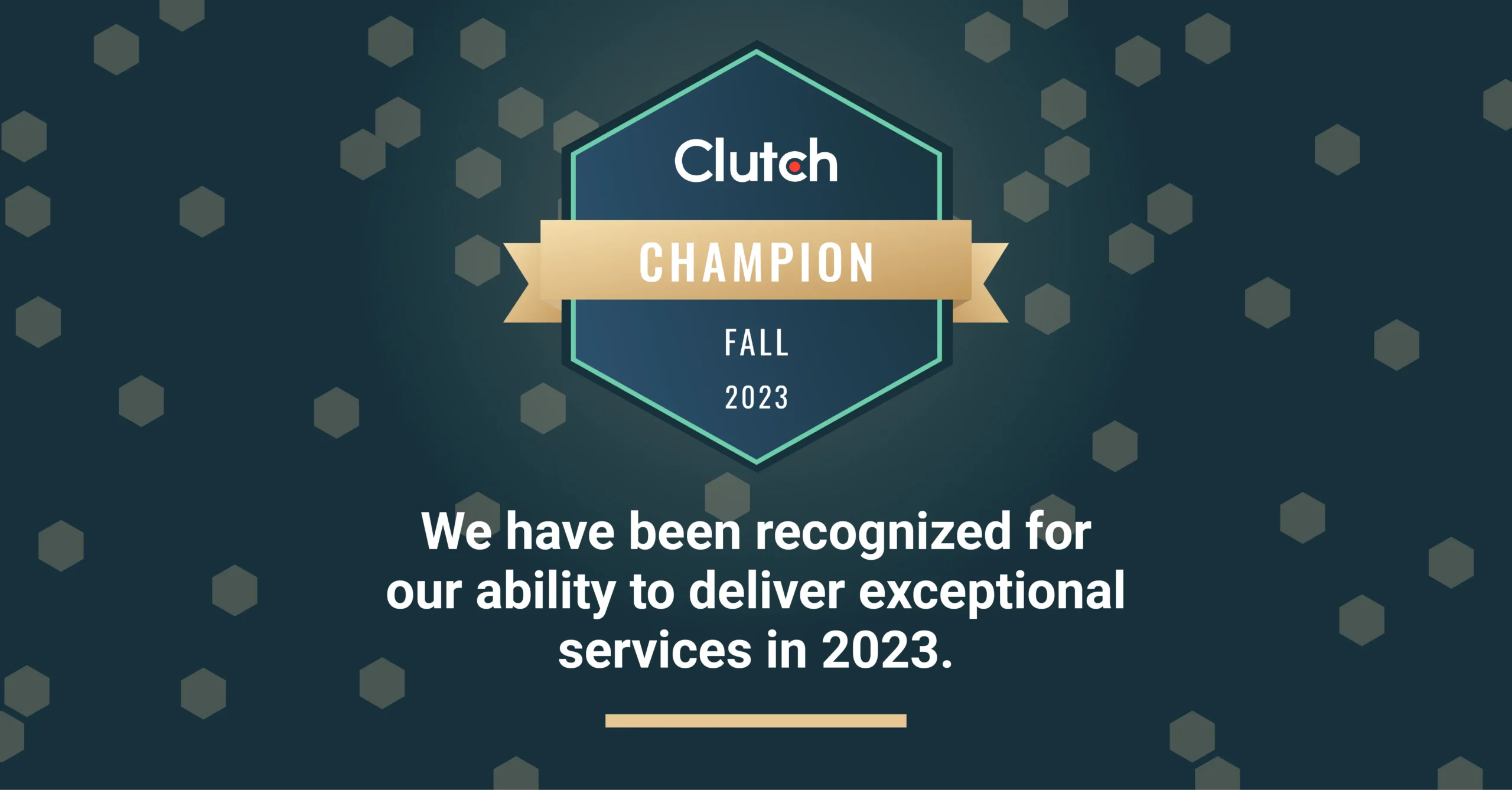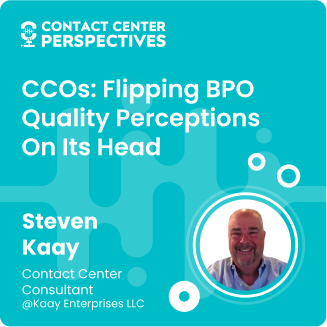Customer Support In E-Learning: Raphaël Droissart, Learning Tribes

Raphaël Droissart is CTO of Learning Tribes, a global company that provides digital learning solutions all over the world. For more than 15 years, Learning Tribes has been offering learning solutions that support individuals and organizations in developing their skills and acumen to better serve the strategic objectives. Learning Tribes dedicates resources to assist training needs from the conception of the strategy, the selection of the appropriate methodology and the implementation of the right technology.
The company offers face-to-face, digital, and blended learning solutions tailored to the needs of every client. Customer support plays an important role in the success of the business, and we at Wow24-7 are honored to work with Learning Tribes and ensure well-rounded support services.
In this interview, we discuss the value of great customer support, the pros and cons of customer support outsourcing, and the impact of the engagement that allows Learning Tribes to expand their services with the same unmatching quality of training solutions offered.
Below, we talk about the following:
- What is the training approach of Learning Tribes
- How the company maximizes learner engagement
- What is a wow customer support
- What challenges customer support outsourcing helps to solve
- How Learning Tribes works with Wow24-7
- Predictions on e-learning solutions in 2020, and beyond
If you’re interested in WOW content like this, check out our blog, case studies, and bundles.
Interview With Raphaël Droissart, CTO At Learning Tribes
Hi Raphaël! Thanks for making time for this conversation. Please tell me a bit about Learning Tribes to start with.
Learning Tribes is a training organization. We design, produce, and engineer training solutions to our clients on business activities and products. We have five lines of business, which include training consulting for companies, as well as design and conception of the training path of our clients. Another line of business is a platform, that is, a learning management system and a B2B solution that is now becoming the most important activity of the group.
Also, we have a catalog line, where we provide fresh, quality content to the clients on some soft skills, and that’s what we cover today in terms of business. So, except for the catalog, our approach is to provide customizable training solutions to the clients and work with them closely as partners to ensure the best results.
That’s awesome. And what’s your company’s approach to maximizing learner engagement, to involving the learners in the studying process?
There are different tools and approaches that we use to maximize learning engagement. Of course, there’s a traditional approach of the 70:20:10 model for Learning and Development that includes assignments, theory, and neuroscience concepts on how to learn, so this is one way to go.
The thing is, digital learning requires a little bit more of mechanisms of learning engagement, especially when we talk about e-learning, where people study mostly alone behind their computers or mobile phones. So, for maximizing learner engagement, we use the latest technology, including AI and VR, in our learning platform and learning management system to bring the best experience to the learner.
Also, we use gamification components and provide many collaborative exercises through discussions, challenges, and different forms of activities that we have on the platform. We try to bring diversity in terms of learning content, as it’s important to not always provide video training but also add different quizzes, texts, and activities into the content for the learners.
That’s excellent. What are Learning Tribes’ tips for successful remote cooperation between teams in regional offices?
The number one tip, I think, is that you need to use the right tools for remote cooperation. Of course, that determines not all the success of the cooperation, but if you have the right collaborative tools that are easy to use and very efficient, your cooperation will be productive.
The second important thing is management. It’s vital to catch up with your team on a daily basis, cultivate your community of associates and learners, and engage your team into using the right tools and efficient collaboration. So, management is very important.
Yes, definitely. Now, let’s talk about customer support solutions. In your opinion, how customer support influences the overall success of a business?
At Learning Tribes, we provide customer support for our own platform, so it’s more on the technology side. Of course, the final success is influenced.
Supporting clients on the project management level is important, as it brings the continuity of the learning progress and the satisfaction of the user. But what brings more value at the end is the quality and efficiency of the solution you provide. Especially when talking about a learning management system, we need to ensure the right learner engagement, the right connection, the right workflow. I think it’s the most important thing that we take care about.
Supporting learners and delivering them great support terms is a must. Of course, customer support should be there when a user needs help with a product, and you provide the best answers and ensure a minimum response time. This is, I think, one of the keys to success. And if learners really feel that, yes, there’s a super team to support their needs on the platform, it for sure brings success to the product at the end.
That’s for sure. And what is customer satisfaction to you? How do you measure it?
We consider customer satisfaction at different levels. I would say we have customer satisfaction at the quality level so that we try to catch some opinion about our product when clients are using it, which translates to NPS.
The second one is customer satisfaction at the project management level, and this is also linked with customer support and what you do. Also, the time you take to fix a bug or call back when you have an issue also has an impact on customer satisfaction.
We don’t have exact metrics to measure the satisfaction on the product level, but what we do is that we organize a meeting for every project at least every semester. This meeting is dedicated to the client to talk about what they like in the product, what they don’t like, what they feel should be improved, and so on, discussing item after item. Then, we come back on this feedback during team meetings.
Also, I think it’s kind of not measurable, but it’s a sure way to understand customer satisfaction when the clients are walking with us. Customer success is not always about numbers and KPI, but sometimes about the trust and how far you go with your client within your project.
How do you see Wow customer support?
To build Wow customer support, I would say you need to provide some rules on the company approach and how to reply to the clients. Then, train your team and apply these rules within the company and daily tasks.
For example, at the product level, it’s about the reliability of the support team. When there are questions from users or a bug reported, support agents should be able to answer in chat within one minute and reply to emails within four hours.
The same thing is to the resolution process. A support team should have an established resolution process when you have a bug so that you don’t make the client wait for a solution for too long. Customer support needs to process the case, inform the team that there’s a bug, set priority on the bug, assign developers, test the solution, and contact the client. If you have the support processes in shape, you’ll be able to process a bug without compromising the main development processes. This is a Wow customer support.
I see. Interesting, how did you come to work with Wow24-7? What customer support challenges were you trying to address with outsourcing support services?
Through Google. I was typing some keywords like “customer support for B2B SaaS platform”, something like that.
I was looking for a good customer support company. Our volume of support tickets is not at a high level but at the same time, we also had a challenge that we are working with large international organizations, which requires 24/7 support of the product in English. And when we are talking about 24/7 support, it can be very costly.
I found your model of a shared team in charge of 24/7 customer support for up to 20 tickets per day very smart, as it allows us to provide efficient support on the platform. As I said, the platform doesn’t require a high volume of L1 support. So, with this cooperation, we provide timely and quality support of the learning platform. Thanks to the support team, I know that the clients won’t be disappointed because we are not able to reply in time or have issues at some point.
Super! What expectations from customer support outsourcing did you have from the start? Did the Wow24-7 team meet them?
The first expectation from the customer support company was that the team would be able to use our own tools. We use some collaboration tools available on the market, so it was kind of easy to agree on the software. But it was one of my requirements, as we have existing processes and software, and the team had to get on board quickly and be able to process the first support tickets shortly.
The second one is that we needed a 24/7 team supporting English-speaking customers. And maybe the third one was the price. I need to scale at some point, and I found that your scalable support model with the price according to the volume of tickets that the team manages in a month fits us great. It allows us to staff more and then scale the model as we work with more clients.
How would you define the impact of the engagement? Were there any improvements or optimization?
We have English-language customer support, and so far, so good.
Right now, we don’t have a high load of tickets per month. Why is that? We have a lot of projects where clients require to bring their own customer support team to the project. We are working with some big companies, and they have people that are in charge of doing the support of their tools, as well as the learning management system.
For such clients, it becomes their internal tool, and very often, they want to provide their own customer support, which translates to their own support tool on the platform. So, when their employee requests something, it goes directly to the company’s team.
This is why the volume of tickets is not that huge, and you offered a working solution to that. Also, the onboarding process of the support team within our product was very successful. I have nothing to complain about.
What tips on outsourcing support solutions would you like to share with other companies?
For sure, communication is the key. Companies shouldn’t hesitate to integrate outsourced teams into their processes and especially communication channels. The great thing with Wow24-7 is that you were already using Slack, and now if we have any things to say, we are already connected with the support team. Your work and the time that you take to answer our requests is very transparent for us. I think that communication makes the most of the success of the outsourcing processes.
Awesome! And lastly, any predictions for e-learning solutions in 2020 and beyond? What do you expect to change, to evolve, to disappear, maybe?
Predictions are always hard to make. But a trend that may become a future is that on the e-learning market, everything is much more open than before. So, in terms of platforms, that’s all now more integrated with each other.
When talking about e-learning, the content itself regarding soft skills is in high demand. So, we use more and more technology to provide such content to the clients and allow learners to engage with this content.
Learning Tribes’ intention is to recommend the right content to the right user wanting to amplify their skills and link that with the information within the company. Right now, we are eager to be a training solution for businesses based on the performance of a particular job within the business. We make a link between the analytics of the activities, the on-the-job performances, and connect it with our learning management system, where users can find training content and all the know-how about how to do their job correctly.
This link between two systems is now very intelligent, so you can provide the right course, even the right piece of the course to the learner in life, based on their performance on the job. I think the intelligence of the platform is really the key to learning in the future. The content itself will still be really important. And the last one is the integration between all the systems. It is getting real, it is increasing a lot, so you can now do a lot of things. That’s very exciting.
That’s awesome! Thanks for sharing valuable insights and for your time today. Really appreciate it. Have a great day!
Thank you for the conversation. Have a great day!
Looking for specific information?
Our specialist will help you find what you need in customer service outsourcing
Book a callDiscover Contact Center Perspectives Podcast
Discover the themes that resonate most with your challenges
 English
English





